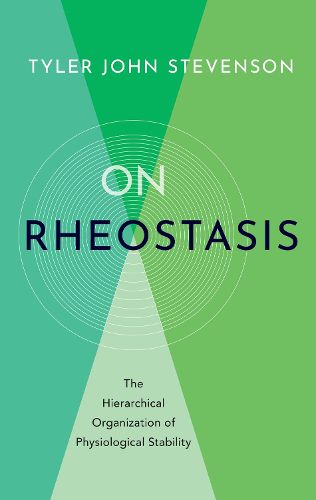Readings Newsletter
Become a Readings Member to make your shopping experience even easier.
Sign in or sign up for free!
You’re not far away from qualifying for FREE standard shipping within Australia
You’ve qualified for FREE standard shipping within Australia
The cart is loading…






All our inner organs and tissues require a constant environment to work effectively. Warm-blooded animals keep a core body temperature around 98 degreesF as the cells function at an optimal capacity at this temperature. The core body temperature of cold-blooded animals is the same as the surrounding environment and animals need to move into warmer or colder environments so that the internal state becomes ideal for physiological processes. One of the fundamental concepts in life sciences and medical and veterinary practice is that our internal states maintain stability through a process called Homeostasis. Originally coined by Walter B Cannon, homeostasis describes a series of internal physiological components that seek to maintain a fixed state established by set points (e.g., 98 degreesF core body temperature). Any deviations in homeostasis leads to severe pathology such as hypothermia or death. But it is becoming increasingly clear that homeostatic set points vary predictably with time or new, temporary set points can be created. The concept of rheostasis, described as the regulated change in physiology, accounts for how homeostatic set points can change to optimize our health and wellbeing, and survival in all animals. Daily changes in hormones, sleep-wake cycles, female reproductive cycles, and seasonal breeding in animals are excellent examples to show regulated changes in physiology. In this book, the concept of rheostasis is re-examined through the lens of 30 years of discoveries that include newly identified genes, increases in our understanding of the internal activity in cells, scientific advances in how neurons in the brain communicate with each other, complex imaging, and identifying how the brain creates representations of our environment. This book aims to present a new way of thinking about how our bodies maintain physiological stability and proposes that homeostasis and rheostasis act independently and evolved separately to maintain stability by entirely distinct processes. The new conceptual model described indicates that our physiological systems have a tiered level of organization with significant implications for how we maintain our health and the treatment of common illnesses such as some bacterial or viral infections, as well as complex treatments for psychiatric and neurological disorders.
$9.00 standard shipping within Australia
FREE standard shipping within Australia for orders over $100.00
Express & International shipping calculated at checkout
All our inner organs and tissues require a constant environment to work effectively. Warm-blooded animals keep a core body temperature around 98 degreesF as the cells function at an optimal capacity at this temperature. The core body temperature of cold-blooded animals is the same as the surrounding environment and animals need to move into warmer or colder environments so that the internal state becomes ideal for physiological processes. One of the fundamental concepts in life sciences and medical and veterinary practice is that our internal states maintain stability through a process called Homeostasis. Originally coined by Walter B Cannon, homeostasis describes a series of internal physiological components that seek to maintain a fixed state established by set points (e.g., 98 degreesF core body temperature). Any deviations in homeostasis leads to severe pathology such as hypothermia or death. But it is becoming increasingly clear that homeostatic set points vary predictably with time or new, temporary set points can be created. The concept of rheostasis, described as the regulated change in physiology, accounts for how homeostatic set points can change to optimize our health and wellbeing, and survival in all animals. Daily changes in hormones, sleep-wake cycles, female reproductive cycles, and seasonal breeding in animals are excellent examples to show regulated changes in physiology. In this book, the concept of rheostasis is re-examined through the lens of 30 years of discoveries that include newly identified genes, increases in our understanding of the internal activity in cells, scientific advances in how neurons in the brain communicate with each other, complex imaging, and identifying how the brain creates representations of our environment. This book aims to present a new way of thinking about how our bodies maintain physiological stability and proposes that homeostasis and rheostasis act independently and evolved separately to maintain stability by entirely distinct processes. The new conceptual model described indicates that our physiological systems have a tiered level of organization with significant implications for how we maintain our health and the treatment of common illnesses such as some bacterial or viral infections, as well as complex treatments for psychiatric and neurological disorders.